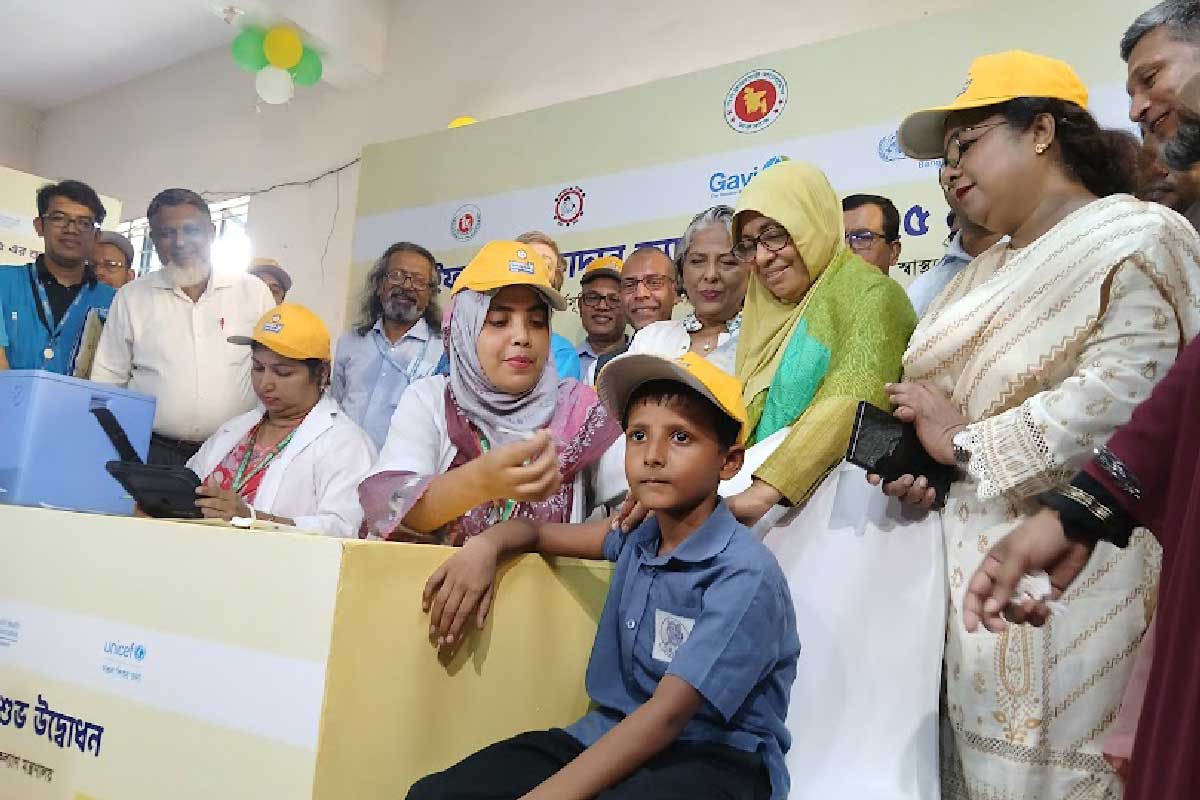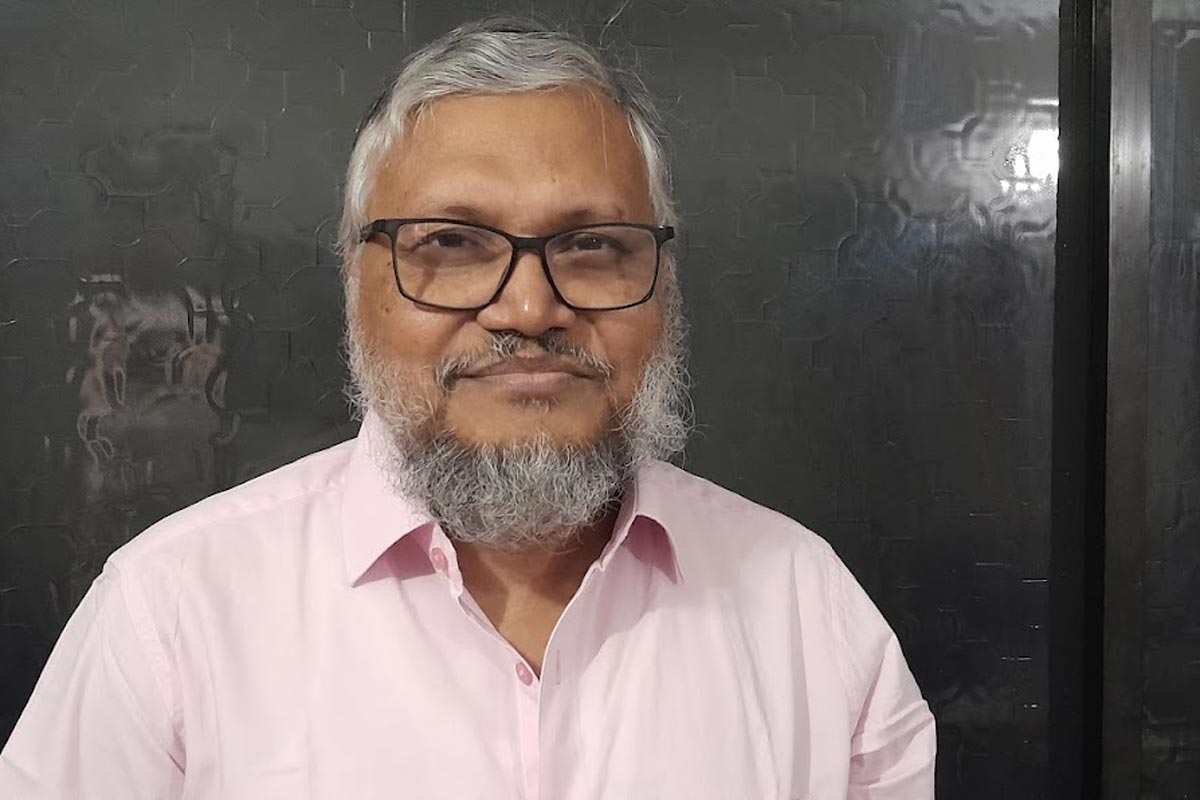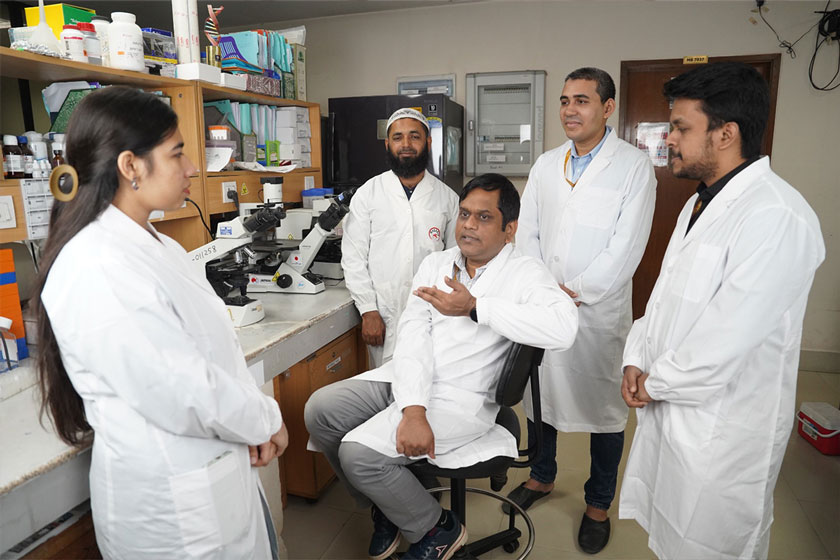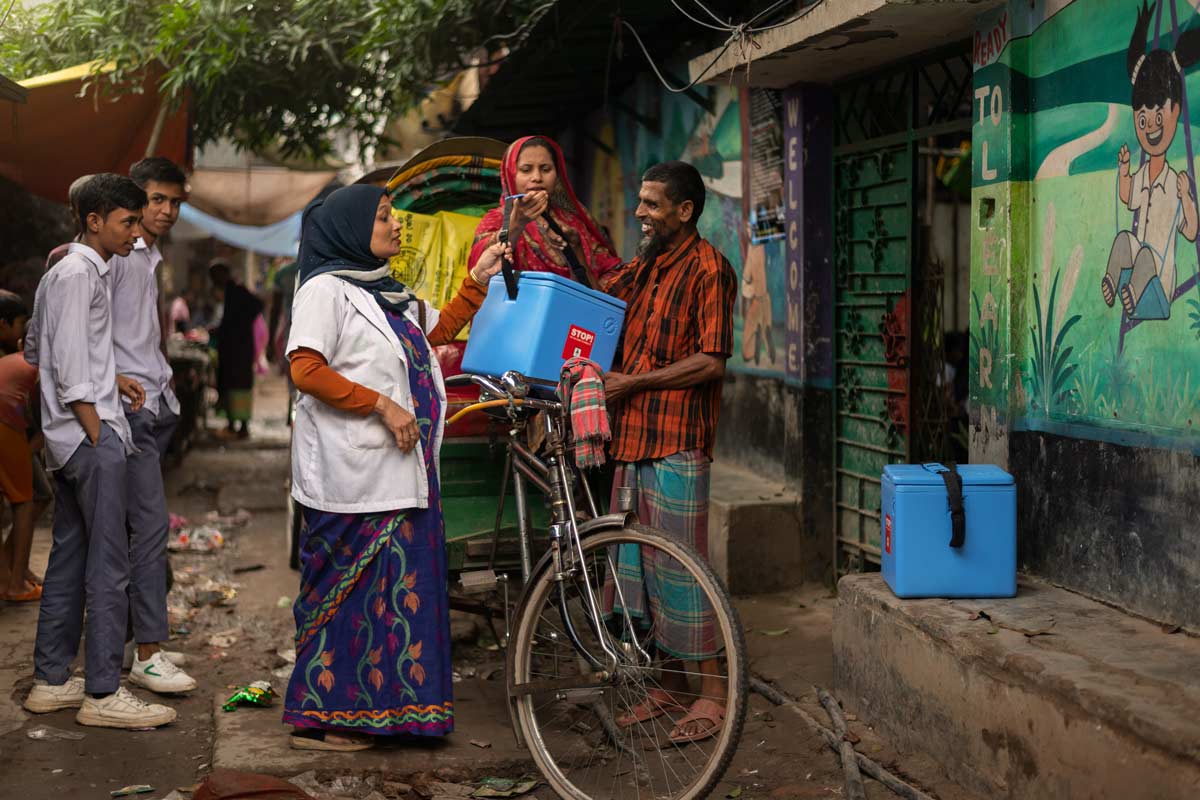In Bangladesh, a new way to map typhoid promises to aid vaccination strategy design
Salmonella Typhi is tricky to culture in the lab. But a group of scientists in Dhaka have shown that a virus that preys on the typhoid bacterium works as a proxy tracker.
- 15 April 2024
- 6 min read
- by Mohammad Al Amin
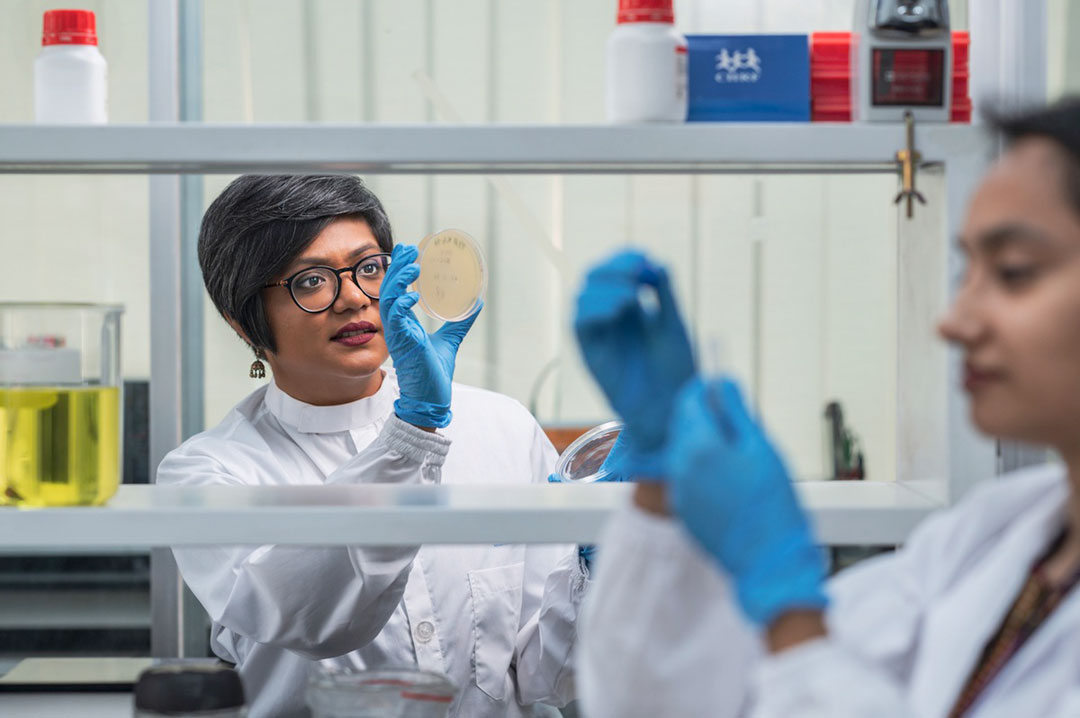
Typhoid fever sickens as many as 14 million people a year, killing 135,000 of them. Alarmingly, an extensively drug-resistant (XDR) version of the causative bacterium, which emerged in 2016, has already become the dominant cause of the illness in Pakistan. The world has good World Health Organization-prequalified vaccines, which have worked well to curb XDR typhoid outbreaks.
But where – and how – best to deploy those vaccines?
"Traditionally, it was difficult to track the circulation of Salmonella Typhi in a big urban area," said Dr Senjuti Saha, a well-known Bangladeshi microbiologist with the Child Health Research Foundation (CHRF) in Dhaka, during a recent Zoom interview. That has made designing solid vaccination strategies against typhoid fever, which spreads in contaminated food and water, much more difficult.
"We can use Salmonella Typhi-specific bacteriophages as a tool to track Salmonella Typhi in nature, which ultimately leads us to understand typhoid burden in a particular area."
– Al Amin, researcher at CHRF
Surveillance based on blood cultures is time-consuming and expensive – a sub-optimal basis for public health strategy, especially in the low- and middle-income settings where typhoid is a problem.
In theory, the typhoid bacterium should be a good candidate for environmental sampling, an efficient mode of surveillance for many pathogenic threats. "Salmonella Typhi is a human-restricted pathogen," explains Al Amin, a researcher at CHRF. "If Salmonella Typhi is found anywhere, then it can be said there is a case." In other words, if the bacterium is present in a locality's water or sewage, that's a reliable indicator that it's present in humans in that area too, opening the door to what ought to be a cheaper, easier way to map the disease's presence in a population.
Unfortunately, Salmonella Typhi has proved to be particularly difficult to culture from environmental water, and while using quantitative polymerase chain reactions (qPCR) to spy out the bug's DNA in samples reliably works, it's expensive, demanding high-tech machinery and advanced lab infrastructure.
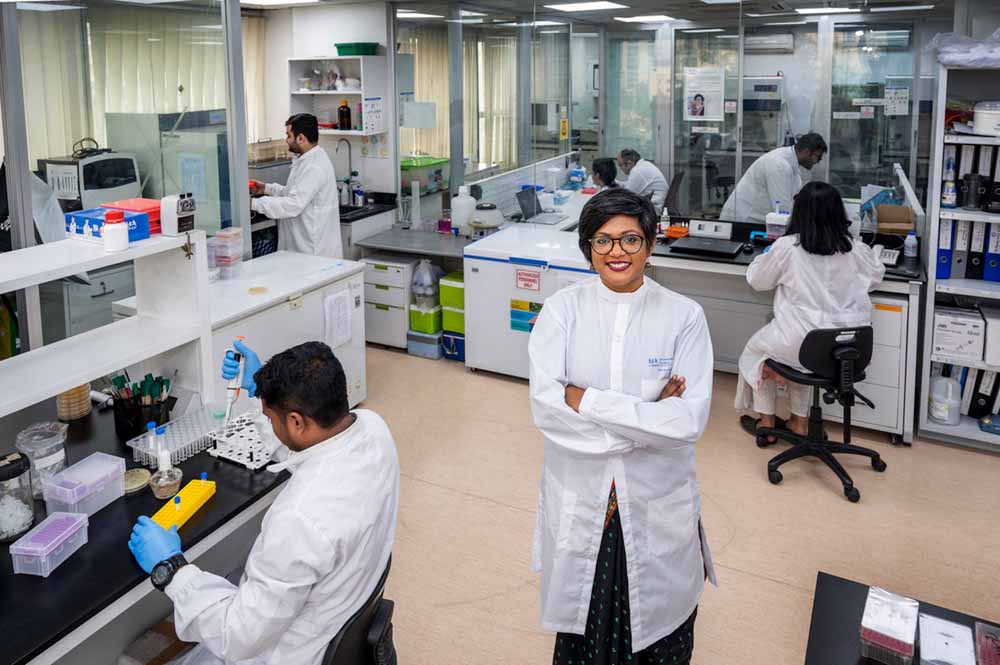
Credit: CHRF
But Saha and her team have pioneered an alternative route, which uses an intriguing proxy indicator rather than relying on the elusive bacterium. "We hope that our new method of surveillance can provide a clear idea of existence of the Salmonella Typhi bacteria in urban settings, which is very applicable to decide the strategy of vaccination against typhoid fever in any country," she told VaccinesWork.
How it works: gutter science
It's an earthy business. In Bangladesh, explained Saha, many urban areas have large drains. These usually carry domestic sewage from houses and apartments. From a public health perspective, these gutters may as well be information mines – if you know how to read them.
Have you read?
In the case of Salmonella Typhi, that means reading in translation. Instead of looking for the bacterium directly, the team decided they could read a virus that preys on the bacterium as a stand-in.
Al Amin explains: "In nature, bacteria-specific viruses called bacteriophages are present and they are very specific to their bacterial host. If Salmonella Typhi-specific bacteriophages can be detected in a sample, we can say Salmonella Typhi is or was also here as well. So, we can use Salmonella Typhi-specific bacteriophages as a tool to track Salmonella Typhi in nature, which ultimately leads us to understand typhoid burden in a particular area."
Samples, collected straight from the drains in sterile containers, are sent to the lab, he explains. "After receiving the samples, we filter the water to remove bacteria and other large contaminants. Then we enrich the sample to look for Salmonella Typhi-specific bacteriophages." These are easier to deal with in a lab setting, he adds.
The presence of the virus in different sewage lines could, therefore, theoretically trace the transmission network for typhoid fever in a given area – potentially helping to generate the kind of accurate, high-resolution estimate of where the burden of disease is highest that public health policy makers rely on.
Pilot insights
The Saha-led research team flagged off a pilot study in 2021, publishing their results in the journal PLOS Neglected Tropical Diseases in February this year.
"In our pilot study, we collected samples from different sites of Dhaka city and Mirzapur, Tangail," Al Amin told VaccinesWork. "We found that bacteriophage positivity is higher in Dhaka city compared to Mirzapur, similar to data generated through traditional hospital surveillance done through blood cultures."
A lot higher: the Salmonella Typhi-specific bacteriophages were present in 31% of environmental samples from Dhaka, compared to just 3% from Mirzapur. Crucially, that corresponded to results from 8,400 blood cultures taken in the two cities. Five percent of the blood cultures from Dhaka and just 0.05% from Mirzapur were positive for the typhoid pathogen. Simply put, the bacteriophage proxy works.
The CHRF scientist further said that with the support of Bill and Melinda Gates Foundation, the team has already embarked on a nationwide surveillance project, which will run two years from January 2023, and has the goal of estimating the burden of Salmonella Typhi in all 64 districts of Bangladesh.
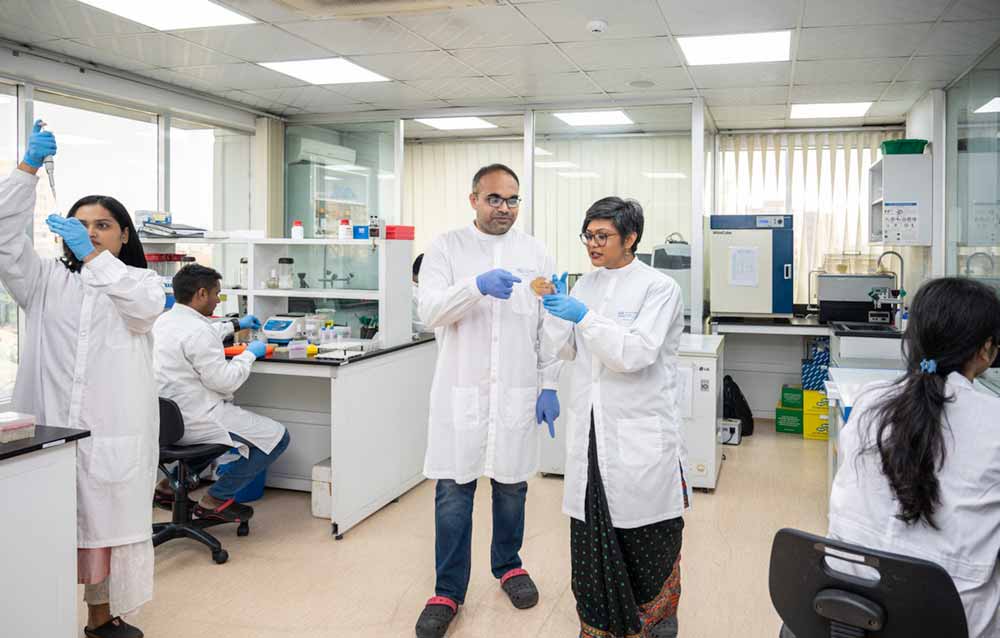
Credit: CHRF
"We have collected water samples from sadar upazila [the main subdistrict] of all the 64 districts, which is often the more urbanised areas. Our three mobile teams travel around the country to collect samples. We collect samples two times in a year. Through this work, we are getting an idea about the prevalence of Salmonella Typhi across the country," Al Amin said.
Resolving the map, drawing up a plan
The Global Burden of Disease Study estimated that in 2019, there were half a million typhoid cases and just over 7,500 typhoid deaths in Bangladesh. But Dr Aninda Rahman, Deputy Programme Manager (ARC, Viral Hepatitis and Diarrhoeal Diseases Control Programme) of the Directorate General of Health Services (DGHS) explains that the health directorate itself has historically generated no specific high-resolution monitoring report to break down the burden.
Higher-resolution typhoid surveillance will not only inform disease-control strategy, but will also act as a baseline against which to assess interventions.
"This surveillance will help a lot to prevent the typhoid disease, as it will also give data of the existence of Salmonella Typhi in the environment, and will help us to know about the impact of the vaccination against typhoid," typhoid expert Arif Mohammad Tanmoy, also associate scientist at the CHRF, told VaccinesWork.
There's reason to hope for a significant impact. A Bangladesh-based cluster-randomised clinical trial of Typbar TCV, the first typhoid conjugate vaccine (TCV) prequalified by WHO, showed an efficacy of 85%, with higher efficacy rates reported from studies in Pakistan.
Bangladesh has decided to make TCVs available to millions of its citizens. "We have already applied to Gavi to this end," said Dr Md Monjurul Islam, Deputy Programme Manager at EPI, MNC and AH of the DGHS. "We hope we can start the vaccination campaign in May 2025."
The government intends to make the TCV jab routine for nine-month-old babies countrywide. In the meantime, Dr Islam said, the health authority has made a campaign plan with the support of the surveillance system innovated by the CHRF scientists.
More from Mohammad Al Amin
Recommended for you

